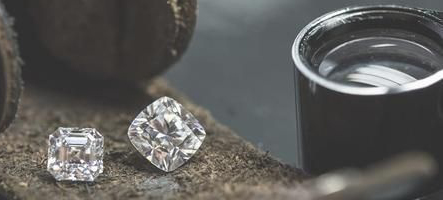Infatti, whether natural diamonds or cultivated diamonds, their industrial chain is not complicated. In parole povere, the upstream is responsible for mining or producing rough diamonds, the middle is responsible for cutting and polishing, and the downstream is responsible for manufacturing and selling jewelry.
Natural diamond mining rights are controlled, with the top five companies, led by De Beers, controlling about 70 percent of global production. De Beers was also fined $10m in 2004 for fixing diamond prices. Perhaps the most obvious thing about De Beers is the slogan, “A diamond is forever, a diamond lasts forever.” But few people know that exchanging diamond rings to witness love during marriage or engagement was De Beers’ earliest marketing innovation. You could say De Beers controls supply with his left hand and creates demand with his right. In contrasto, the upstream of diamond cultivation is relatively dispersed, with HPHT technology and CVD technology accounting for half of the total. HPHT technology, by the way, is mainly produced by a few companies in Henan, Cina.

In the midstream, natural and cultivated diamonds are the same, con 95% of the production cut and polished in India. One may wonder why India has become the world’s largest processor. For historical reasons, India has long been the world’s leading diamond producer. India went from diamond producer to diamond processor as its own reserves were depleted by the discovery of larger deposits in Brazil and Africa. One might also wonder if our country will also develop a diamond processing industry to compete with India. My answer is yes, but not necessary. The reason is simple diamond cutting and polishing is a low-technology value-added industry, which is essentially a labor-intensive “chore”. Per esempio, in Surat, India, there are nearly 100,000 diamond-cutting factories and nearly 700,000 workers in this diamond processing industry. These cutters or grinders earn about $80 a week, or as much as $100 for slightly more skilled workers. From the per capita salary can also be seen that the profit core of the diamond industry chain must not be in the middle. Taking diamond cultivation as an example, the upstream gross profit margin is about 60%~70%, the downstream gross profit margin is about 40%~70%, and the middle-stream processing industry gross profit margin is the lowest, solo circa 10%.
Thus, the global division of labor between natural and cultured diamonds is very different. In the natural diamond industry chain, Chinese enterprises can only participate in the competition in the consumer market through terminal marketing. Tuttavia, China produces about 40 percent of the world’s rough diamonds in the diamond-growing industry chain. When it comes to cultivating diamonds, Chinese manufacturers are at the singularity of technology commercialization. With the improvement of technology and the accumulation of experience, China’s diamond industry will be further improved.
